Arizona Wild Flowers
Pictures, Photos, Images
Descriptions, Information, Reviews.
Owl Clover, Castilleja exserta.
We Are Proud Of Our SafeSurf Rating!
Click On Any Of The Following Links By Amazon.Com
For Books, & Videos About Wildflowers Of Arizona & The Southwest USA. No Obligation!
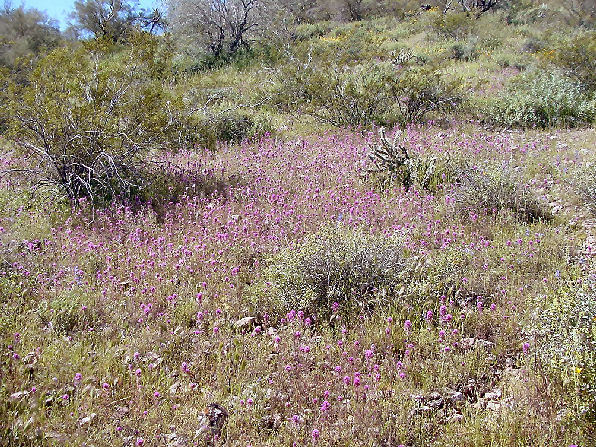 |
| Owl Clover, Castilleja exserta. |
|---|
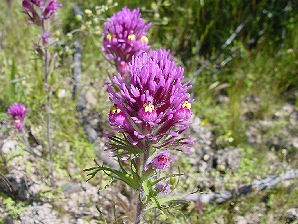 | 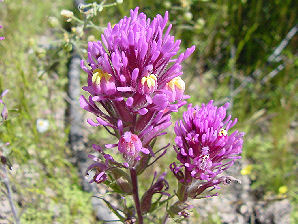 |
| Owl Clover, Castilleja exserta | Owl Clover, Orthocarpus purpurascens |
|---|---|
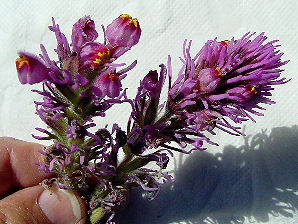 | 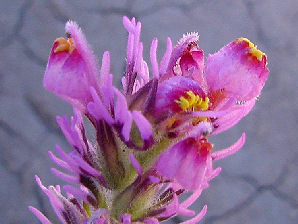 |
| Owl Clover, Castilleja exserta | Owl Clover, Orthocarpus purpurascens |
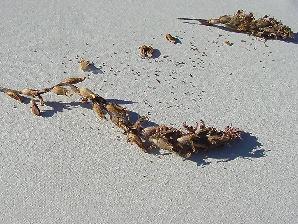 | 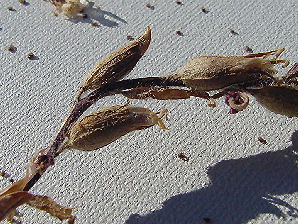 |
| Owl Clover, Castilleja exserta Seed Pods | Owl Clover, Orthocarpus purpurascens Seed Pods |
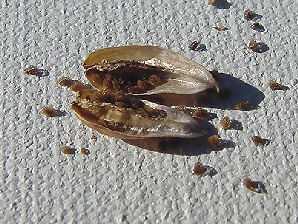 | 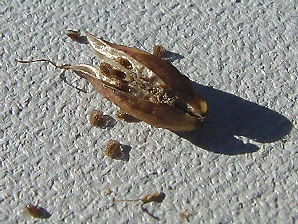 |
| Owl Clover, Castilleja exserta Seed Pod And Seeds | Owl Clover, Orthocarpus purpurascens Seed Pod And Seed |
 /
/

Owl Clover.
We wish to thank Wikipedia, the free encyclopedia for some of the information on this page. We share images and information with Wikipedia. Owl clover: Castilleja exserta, (formerly Orthocarpus purpurascens). Annual. The plant grows at elevations between 0 - 4500 feet in open desert areas. They typically grow to about 6 - 8 inches in height and have green, brushy leaves which are about an inch in length. The Owl Clover blooms in the spring, producing a tiny yellow flower which is surrounded by brushy, purple bracts (bracts are modified leaves which grow at the base of the flowers). The plant is called Escobita in Spanish, which means "little broom". Owl clover is a member of the figwort family (Scrophulariaceae). It produces spectacular flowering spikes, about 6 - 8 inches in height, composed of many small flowers. The name "owl clover" derives partly from the clover-like purple color of the flowers and partly from the "faces" of the flowers (yellow in this case) which are said to resemble an owl's face. The species C. purpurascens is found in desert grasslands below about 4500 feet in Arizona. This plant is a hemiparasite: like several members of the figwort family, it gains its sugars from photosynthesis but has a poorly developed root system, so it "taps" into the roots of other plants by producing nutrient-absorbing haustoria, to obtain most of its water and mineral nutrients.
Quick Notes:
Height: Normally About 6" - 8" Tall. Can grow to 18 inches.
Flowers: Tiny yellow flower which is surrounded by brushy, magenta - purple bracts. 5 petals, Pink/purple to white/yellow, with lobes forming a yellow beak and "eye-spots" on the lower lip - an owl's face if you look just right. Bracts and flowers to 1.25" long, in dense spikes.
Flowering Time: March - May. Sometimes in great numbers after rains.
Leaves: Alternate, pubescent leaves, 0.5 to 2 inches long, pinnately cleft into very narrow segments. The green, glandular-hairy, 5 to 9-lobed leaves intergrade with the bracts.
Found: Native of most parts of Arizona, California, & Northern Mexico.
Hardiness:
Soil pH requirements:
Sun Exposure:
Elevation: Can be found from 0 - 4,500 Feet.
Habitat: Hillsides, Roadsides, Flats, Sandy Plains.
Miscellaneous: Flowering Photos Taken April 15, 2005.
|



We Are Proud Of Our SafeSurf Rating!
Click On Any Of The Following Links By Amazon.Com
For Books, & Videos About Xerioscape Plants Of Arizona & The Southwest USA. No Obligation!
Back To Arizona Wild Flowers Home Page.
Back To Arizona Wild Flowers, Blue - Violet Flowers Page Two.
Back To Arizona Xeriscape Landscaping Main Page.
Back To Xeriscape Annuals Page One.
Back To DeLange Home Page
© 1966 - Present, Audrey, Eve, & George DeLange
| © 1966 - Present, Audrey, Eve, & George DeLange |


